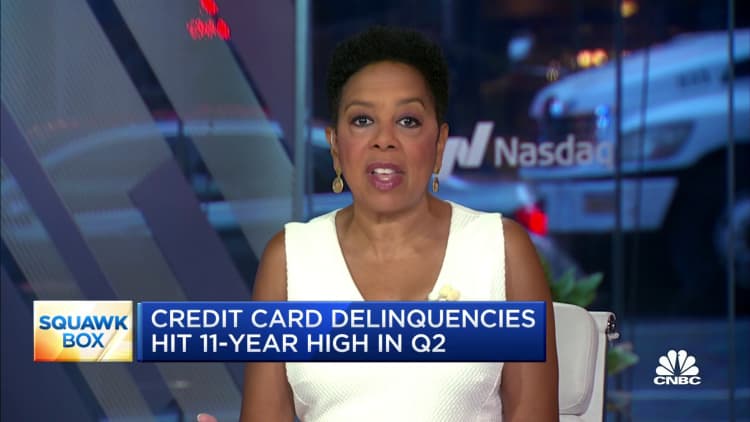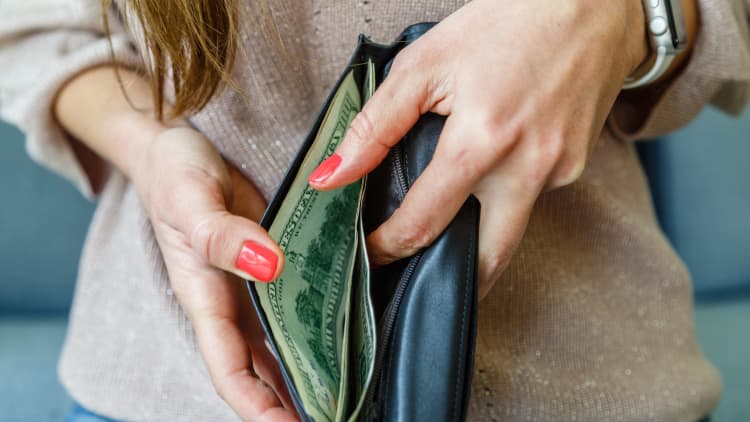Violetastoimenova | E+ | Getty Images
By some measures, Americans have never been more in the red.
In the second quarter of 2023, total credit card debt surpassed $1 trillion for the first time ever, which helped bring total household debt to $17.06 trillion, also a fresh record, according to the New York Federal Reserve.
But adjusted for inflation, credit card debt was higher when the economy bottomed out in 2008, according to a recent analysis by WalletHub.
“Inflation is masking the fact that people are actually managing their debt better than they have in the past,” said Odysseas Papadimitriou, WalletHub’s CEO.
“When you account for the massive impact inflation has on balances, as well as the fact that debt-to-deposit levels are roughly 50% below the peak, U.S. households are actually in a lot better shape financially than it seems at first glance,” Papadimitriou said.
In this case, deposits include checking and savings accounts, as well as certificates of deposit and money market accounts.
Even with some signals that credit card spending growth is slowing, Americans continue to buy more and save less.
The San Francisco Fed recently estimated that the excess savings consumers accumulated from government transfer payments will run out in a few months.
“More than the level of credit card debt, it is the trajectory I find most troubling,” said Greg McBride, chief financial analyst at Bankrate.
Not only are balances higher, but more cardholders are also carrying debt from month to month, according to a Bankrate report. Of those carrying card balances, 60% have been in debt for at least a year.
“And all this despite some of the lowest levels of unemployment in more than 50 years,” McBride said.

“We also can’t discount the importance of higher interest rates on the costs of borrowing for households,” said John Sedunov, associate professor of finance at Villanova University’s School of Business. “Not only are goods and services more expensive, but so is money.”
The average credit card rate is now more than 20% on average, another all-time high.
At nearly 20%, if you made minimum payments toward this average credit card balance, it would take you more than 17 years to pay off the debt and cost you more than $8,366 in interest, Bankrate calculated.
“Consumers are not financing purchases at 20% interest because they’re flush,” McBride said. “The rising balances and increasing number of households carrying balances are signs of the financial strain millions of households are feeling.”

At the same time, savers could be getting better returns on their cash than they have in years, also due to higher inflation and interest rates.
Top-yielding online savings account rates are now at more than 5%, the highest since 2008′s financial crisis, with some short-term CDs even higher, according to Bankrate.
“If this is a time when people can leverage the opportunistic situation with higher yields on savings products, then by all means,” said Mark Hamrick, Bankrate’s senior economic analyst.

